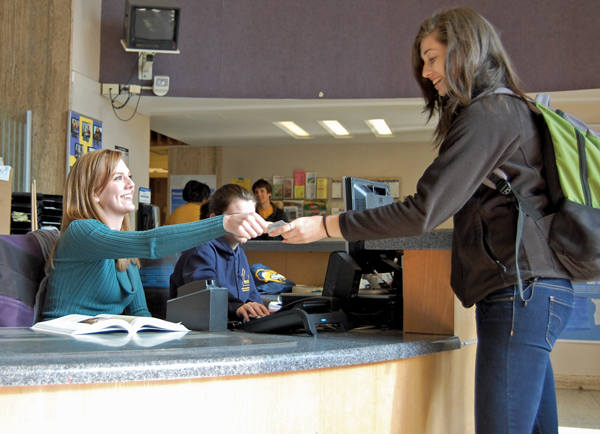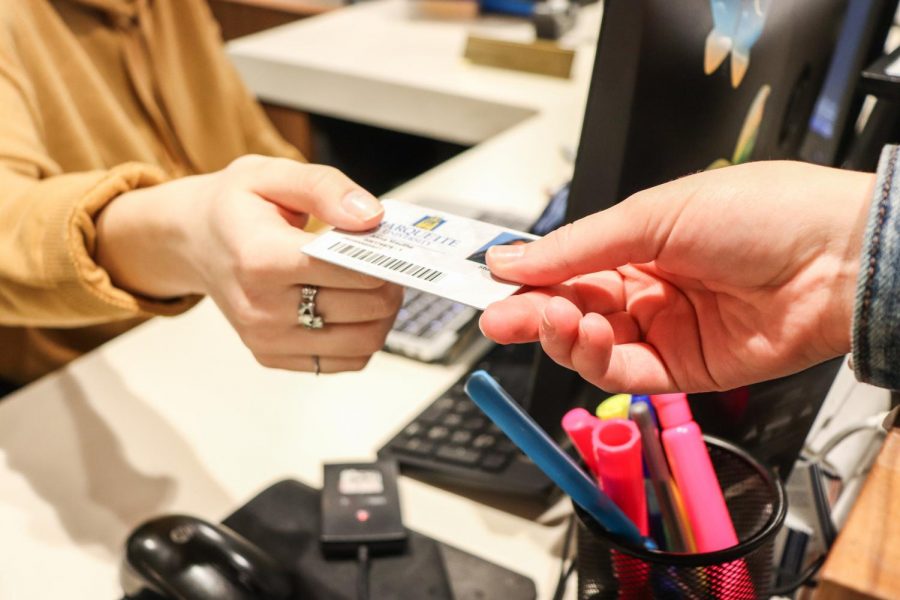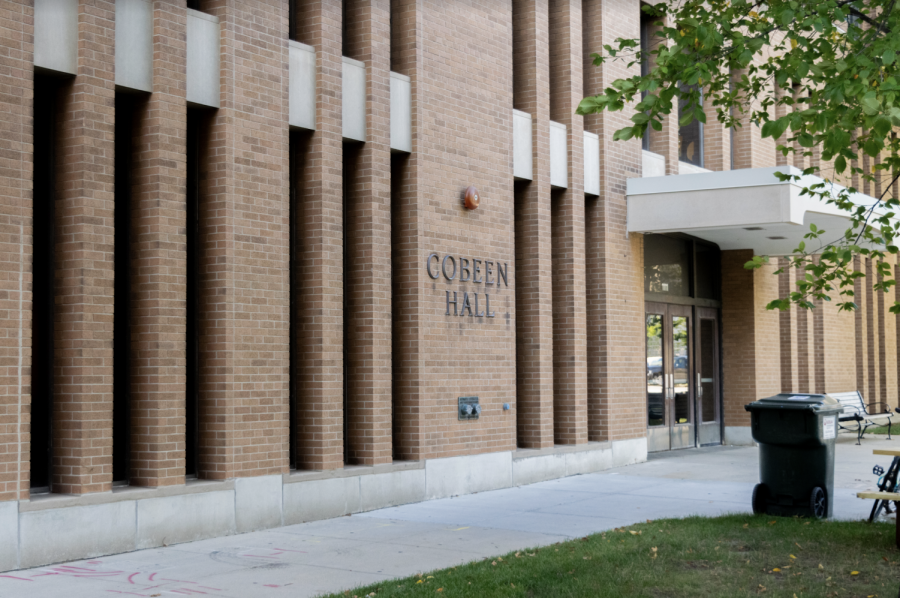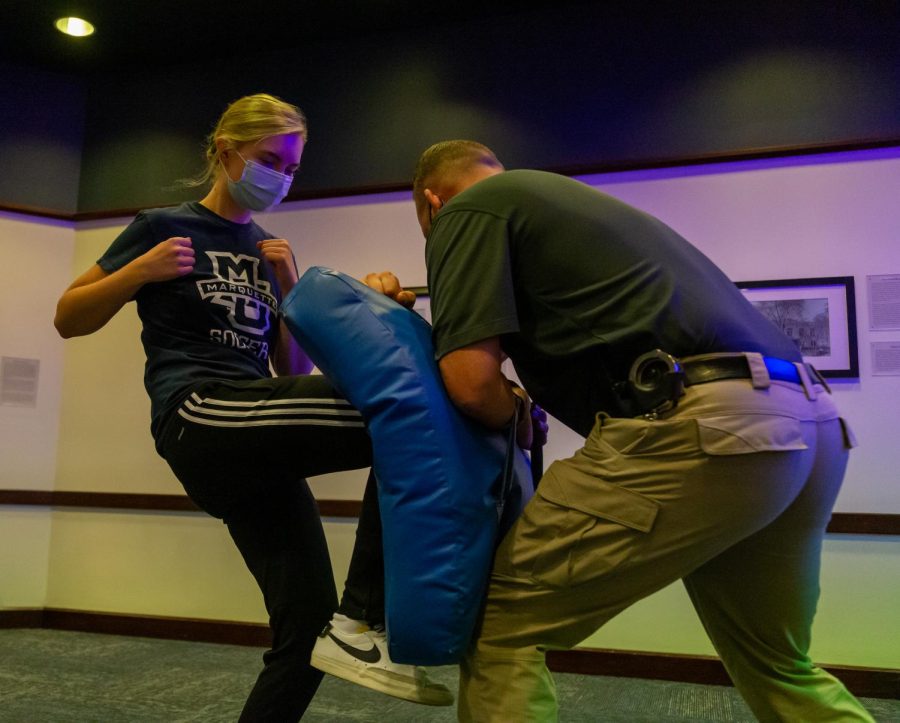
Continuing its training of different groups around campus, members of the Marquette Police Department provided an active shooter training session to College of Communication faculty and staff members on Dec. 9 to prepare them in case of an emergency.
The session was led by MUPD Captain Jeff Kranz, who emphasized that the biggest goal of the session is to give people the tools to survive an event like a mass shooting.
“You can live through this event,” Kranz said, warning the attendees about seeing graphic images and videos. “This (session) isn’t meant to scare you. It’s meant to make you aware, to get the wheels turning and get the discussion started.”
Kranz said the training, presented to nearly 30 staff members, is almost identical to active shooter briefings that police officers receive. He stressed that everyone is a first responder in a shooting situation, and understanding the situation inside and out is key to survival.
“They are studying and practicing what they are doing,” Kranz said about shooters. “These are not spur of the moment events. Someone isn’t getting mad, walking out to their car, and grabbing a gun to shoot people.”
Provided were three main ways to survive an active shooter scenario – run, hide or fight. All three can end in survival if the person can read the situation and evaluate what is best at that moment.
Linda Menck, a strategic communication professional in residence, came to the training for her students and colleagues, as much as she did for herself.
“To let our students know that we participated in something like this sends a signal to them that we care about them,” Menck said. “Same thing with our colleagues. I look around the room and I see who of my colleagues are here and it just demonstrates that we care about each other.”
One tip given was to pre-determine routes based on your building and know everything about your building. Kranz said it’s easy to fall into a routine of following the same path to your office or desk everyday, so he urged attendees to be a tourist in their own building.
“Leave your stuff,” Kranz said. “Save your life – not your stuff. Pick-‘n-Save will get you a new card.”
Kranz said shooters move like water. They don’t like hard things to maneuver, like a locked or closed door. However, they do like stimulus and will gravitate toward noises they hear.
“Turn your phone off,” Kranz said. “You don’t get a prize for being the first 911 caller. Make sure you are safe before you call. We will get there. And at Marquette we will be there extremely quickly.”
David Denomie, the university’s director of debate administrator, said he appreciated the extra explanation of what happens in situations with automatic weapons.
“Our staff and faculty are pretty attentive to things like this that come up,” Demonie said. “Even though it was our lunch hour, we still came out and thought it was important to hear from the MUPD, to hear what our procedures are and what their recommendations are.”
Kranz said the initial act of violence the shooter does is not preventable, but everything after that initial act – where the shooter hunts people – can be combated with smart thinking.
“People say ‘I want to be safe and know I’m safe’ but you can’t just have that,” Kranz said. “You can’t be wrapped in a Kevlar bubble.”
In the case of hiding, Kranz said to be smart about the location. He said to not hide under a table and think if you can’t see the shooter, the shooter can’t see you.
Kranz explained that people should not be afraid to use self-defense. However, the key is to understand how capable each person is for defending themself.
It was noted that faculty and staff members can call MUPD if they are concerned about a student. While the university offers resources like the counseling center, MUPD can act as a liaison and make sure that information doesn’t slip through the cracks.
The history of active shooters and certain scenarios were discussed at the beginning of the presentation. Kranz used an example of a mass shooting in 1927 to describe how long those events have been happening.
Sumana Chattopadhyay, associate professor of Digital Media and Performing Arts, said – since she comes from an Indian culture – the idea of self-defense comes natural to her.
“When I was a grad student and I would be coming home late, I would always have my laptop ready,” she said. “I would always imagine scenarios that if a man comes up to me, I would hit him over the head with the laptop.”
There has been an increase in shooting incidents over the past two years but a decrease in shooting victims and deaths, which Kranz attributes to new policies and plans that police departments have implemented.
One example discussed was a 2012 shooting in Oak Creek, Wisconsin, when it took over two hours for medical teams to reach the injured. Now, medical personnel are initially paired with the responding police officers.







